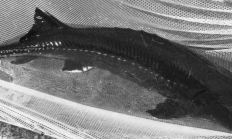
Search myodfw.com
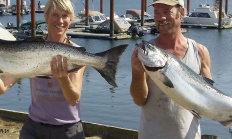
Features: The name “cutthroat” is derived from the two red slash marks or streaks on the underside of the lower jaw. Lahontans don't develop the intense crimson or gold coloration that other subspecies do, but the males can develop some red on their sides. Spots on the head can help distinguish this subspecies from other inland cutthroat subspecies. Habitat: This variety has adapted to the dry, highly alkaline waters and was once widespread throughout the Lahontan Basin of California, Nevada and southeast Oregon. Today, native populations can be found in the Whitehorse and Willow creek basins in the far southeastern


Shooting a target while standing up at the range is a lot different from shooting a turkey while sitting in a ground blind. When practicing for a hunting trip, recreate your shooting scenario. Whether it will be standing, sitting, kneeling, and in or out of a ground blind. Shooting a turkey There ’s no substitute for practicing in conditions that closely resemble those you’ll be hunting in, and this is especially true for bowhunters looking to bag a turkey. Turkeys are nervous birds with very small kill zones, so accurate shot placement is critical for getting a quick, clean kill

This is one of the most widespread and familiar waterbirds in Oregon. It is the largest heron in North America, standing approximately four feet tall. It is slate gray with a white crown, cheeks, and throat, rusty thighs and a uniformly yellow bill. Adults develop long gray-white plumes on chest, neck, and back during breeding. Juveniles have similar plumage but may be distinguished by absence of breeding plumes, a dark crown, and dark upper bill. Great blue herons frequent many habitats from shallow areas of marshes, lakes, streams, and oceans, where they feed on fish, amphibians, and aquatic invertebrates; to

SE Fishing December 4, 2025 Best bets for weekend fishing Yellow perch fishing is still an option in Recreation Creek, Pelican Bay Area of Upper Klamath Lake, Sevenmile Canal Mouth, and Fourmile Canal. Best fishing for wild, native trout in the Klamath Basin will be the Klamath River. There are some nice holdover trout in the Malheur River below Warmsprings right now. Trout fishing has been great at Chickahominy Reservoir Crappie are abundant in Wolf Creek Reservoir with some nicer fish around 8 inches available. Crappie fishing in Owhyee Reservoir has been good. Channel catfish are a popular option. Find

NW WILDLIFE VIEWING December 4, 2025 Tillamook County Birds Large numbers of waterfowl arrive before November and will likely spend the rest of the winter here. They will raft up out in the middle of most local estuaries on calm days but will move around with the incoming tide and on windy days. Many species of diving ducks can be seen on area lakes and bays. Likewise, many migrating geese are beginning to arrive and are using area fields, along with many egrets, herons and wintering raptors. Pastures and fields are heavily used by a variety of waterfowl when flooded
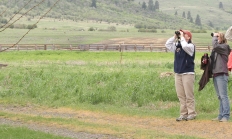
You don’t need a lot of gear to hunt turkey – that’s one reason for its growing popularity. However, the more you hunt – in different seasons and in different parts of the state – the more you’ll discover there are some things that can make you a more comfortable and successful hunter. Here are some essential pieces of gear beginning turkey hunters will want to consider: A face mask or camouflage face paint. Turkeys have keen eyesight so you’ll want to cover your entire face and neck with something camouflage that’s comfortable to wear. Bowhunters often prefer camo face

Oregon hosted the first successful introduction of the ring-necked pheasant in North America. This exotic game bird, released for sport hunting from China is now widely introduced and distributed throughout North America. Although more likely to run than fly, the ring-necked pheasant will explode into the air if startled, producing a distinctive sound from rapid wing-beats. It inhabits open areas such as grasslands, agricultural fields, and brushy areas, and avoids forested habitats. Hear the call of the ring-necked pheasant Photo by Charlotte Ganskopp

Not sure what to do with a fishing rod even if you had one? Thought about hunting but getting started seems like an impossible task? Then let us help you. During ODFW's hands-on workshops and family fishing events we will provide the instruction and gear you'll need to actually catch a fish or shoot a pheasant. Other classes will help you navigate the controlled hunt process, or show you what equipment you'll need to hunt or fish. ODFW offers many classes and workshops throughout the year. View and register for an upcoming event in our new Volunteer and Event Management
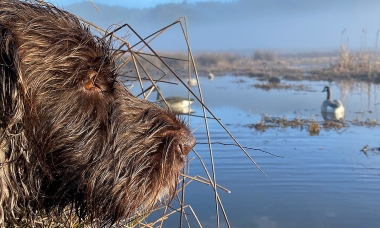
Oregon's 33 hatcheries produce about 40 million fish annually and you can visit them. They offer the chance to see fish – from eggs to brooders – and an opportunity to learn how they are raised. Oregon's hatcheries are important for anglers and the public because they directly provide fish for angling, help rebuild native fish populations, and offer educational programs. They are also vital to supporting the cultural heritage of Tribes. Hatcheries offer great wildlife viewing, interpretive displays and some provide boating and angling access. Did you know that ODFW rears 10 species of fish including steelhead/rainbow trout, brook
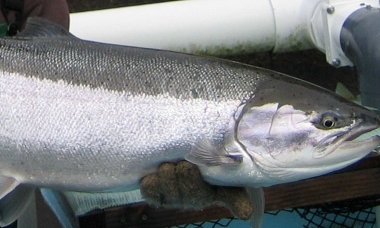
There are two steps in patterning your gun: Verify your point of impact. Confirm the pellets are hitting where you’re aiming. Often called sighting in. Check the pattern of the pellets to see what loads shoot most accurately. Often called patterning. Sight in scopes and fiber optic sites If you’re shooting a shotgun with a single bead on top of the barrel, you can go right to patterning. If you’re shooting a shotgun mounted with a scope or reflex sight, or a fiber optic front and rear site, you’ll need to sight in the gun before you pattern it. Start

Bonneville Hatchery was constructed in 1909. In 1957, the facility was remodeled and expanded as part of the Columbia River Fisheries Development Program (Mitchell Act)—a program to enhance declining fish runs in the Columbia River Basin. The hatchery underwent another renovation in 1974 as part of the U.S. Army Corps of Engineers' (USACE) mitigation of fish losses from the construction of the John Day Dam. In 1998, construction was completed on the Captive Broodstock Facility for the Grande Ronde Basin spring Chinook supplementation program.
Summer Lake Wildlife Area was established in 1944, with primary objectives of protecting and improving waterfowl habitat and providing a public hunting area. It is now a popular destination for hunting, wildlife viewing and environmental education due to its geographic setting, the abundance of wildlife present and species diversity.
